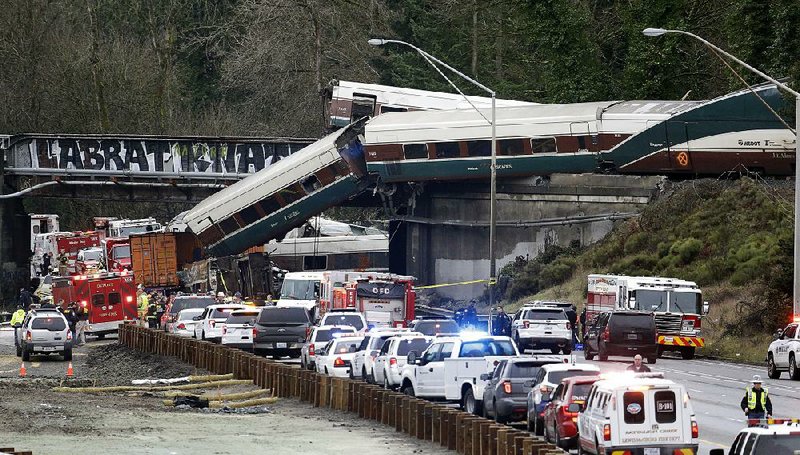SEATTLE -- An engineer in Washington state told investigators he misjudged the location of his Amtrak train before it derailed on a new high-speed route while traveling at nearly 80 mph -- more than twice the speed limit around a curve, the National Transportation Safety Board disclosed Thursday.
In a safety board summary of interviews with the engineer and conductor on duty during the deadly crash, the engineer said he knew the curve with a 30 mph speed restriction was at milepost 19.8 and he planned to start braking about a mile before reaching it.
But he said he didn't see a marker at milepost 18 or a nearby 30 mph speed warning sign. The engineer said he then misinterpreted another signal at the 19.8 milepost.
He said he applied the brake as soon as he saw a 30 mph sign at the start of the curve, but the train derailed seconds later as it entered the 30 mph zone and plunged off an overpass and onto busy Interstate 5-- the Pacific Northwest's main north-south highway.
National Transportation Safety Board member Bella Dinh-Zarr said days after the wreck that the locomotive's emergency brake engaged automatically and was not manually activated by the engineer.
The summary says the engineer was qualified to operate the train on that new stretch of track and had completed at least seven observational trips and three trips during which he operated the train in the five weeks before the derailment.
The fatal trip marked the second time the engineer had officially operated it going southbound on the route.
The summary involved interviews with the engineer and conductor, which took place about a month after they suffered serious injuries in the wreck.
Three people were killed and dozens of others were hurt Dec. 18 on the route from Tacoma to Portland, Ore. The train was carrying 85 passengers and crew members as it made its inaugural run along the fast, new 15-mile bypass route.
The summary said the engineer and conductor were in the lead locomotive as the conductor underwent training and familiarized himself with the new route. Both said they felt well-rested. The engineer said he didn't feel distracted by the conductor being in the locomotive.
Neither man has been identified by the National Transportation Safety Board. However, the summary says the engineer was a 55-year-old man hired by Amtrak in 2004 as a conductor before being promoted to locomotive engineer in 2013.
The conductor, a 48-year-old man, said the ride marked the first time the two men had worked together and there was minimal conversation between them.
He said he looked up from his paperwork after hearing the engineer mumble out loud, just before the derailment, then sensed the train was going airborne.
The conductor was hired by Amtrak as an assistant conductor in 2010 and was promoted to conductor the next year. He said he attended a job briefing with the engineer, going over general track bulletins and other items at the start of the shift.
Garrick Freeman was identified as the conductor after filing a lawsuit against Amtrakclaiming the company failed to provide a safe work environment. He said he suffered multiple broken ribs, a fractured clavicle and serious internal injuries during the derailment.
The National Transportation Safety Board said it will continue the investigation by comparing the crew member accounts with information gained from videos and a data recorder.
A Section on 01/26/2018
